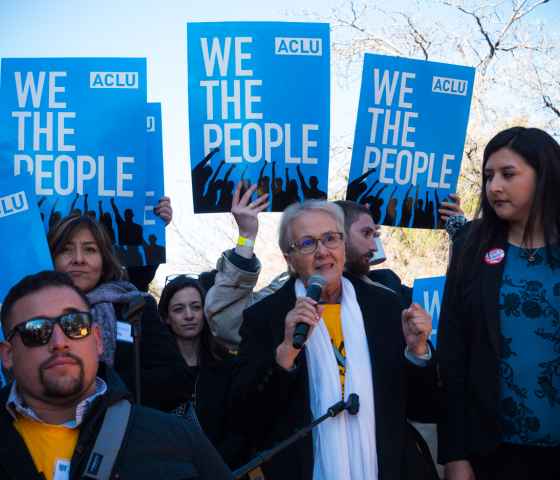Border Enforcement Agencies Need to be More Transparent
It is a core American value that elected officials and public servants, from teachers to police officers, should be held accountable for their actions, and that government agencies should be transparent in their operations. Border Patrol agents, who patrol isolated stretches of desert along the border and are increasingly creeping into the interior of the country, are no exception. The huge increase in the number of Border Patrol agents in the last few years has been paralleled by an increase in the number of people killed at the hands of these agents. Many rights advocates are concerned not just about these use-of-force incidents but also about the apparent lack of transparency and accountability within Customs and Border Patrol (CBP), the largest law enforcement agency in the U.S. An Arizona Daily Star article published on December 9takes an in-depth look at CBP’s apparent practice of “secret, complex investigations” in contrast with the relatively open and transparent investigations conducted by local police agencies.
When a local police officer or sheriff kills someone during a patrol or pursuit, standard practice is for the police agency to hold an open investigation naming the official, stating whether or not they have been given desk duty, and disclosing the results of the investigation. But if a Border Patrol agent shoots and kills someone, there seems to be little transparency. Whether the death is of an individual on either side of the border or a fellow agent (such as in the friendly fire death of Border Patrol Agent Nicholas Ivie), the public should expect a swift, open investigation consistent with the practices of other law enforcement agencies.
But in the last few years, when CBP officers have used deadly force, family members of the victims are often left with more questions than answers. After 19-year-old U.S. citizen Carlos LaMadrid was fatally shot by a Border Patrol agent in Douglas, Arizona, his family did not even know the name of the agent who had killed him until they filed a court order demanding this information. In the case of Anastasio Hernández-Rojas, a 42-year-old man who was beaten and killed by Border Patrol agents in the process of being deported back to Mexico, CBP claimed he was resisting arrest and that agents needed to use force to restrain him, but videos from eyewitnesses show a handcuffed man lying on the ground, surrounded by more than a dozen agents, one of whom used a Taser on him at least five times. Hernández-Rojas’ story was exposed in a PBS “Need to Know” special that aired April 20. The resulting public outcry, as well as a letter from 16 members of Congress, finally prompted a grand jury investigation (which has yet to be concluded).
The procedure for investigations of CBP use-of-force incidents in and of itself is problematic. As the Arizona Daily Star article noted, these investigations usually take several years and are shrouded in secrecy—they even prove confusing for attorneys with direct experience in cases involving agents. At least 19 people, including five U.S. citizens, have died at the hands of CBP agents since January 2010, but the U.S. Department of Justice has released findings in only one of these cases. In the case of Sergio Hernández-Guereca, the DOJ sided with the Border Patrol agent, claiming that the agent followed CBP’s use-of-force protocol and that the United States did not have the authority to prosecute the agent for killing someone who was standing on Mexican soil.
In the wake of continued incidents of deadly force by Border Patrol agents and further public pressure, CBP seems to be taking some welcome steps towards increased transparency. The Los Angeles Times recently reported that Customs and Border Protection has begun a “comprehensive review” of its use-of-force policies. This process includes reminding agents of CBP’s use-of-force protocol, evaluating these guidelines with the help of an outside research group, and giving Mexican authorities information on closed investigations. The Department of Homeland Security’s Office of Inspector General is also investigating use-of-force incidents by Border Patrol agents, going as far back as 2005.
Outcry from civil society, members of Congress and even the international community, including the Inter-American Commission on Human Rights and U.N. High Commissioner for Human Rights, has put pressure on CBP to increase transparency and accountability. And while the comprehensive review of CBP’s use-of-force policies is a welcome and necessary step, we will continue to demand more. For starters, as stated in our recent testimony before the United Nations, the border must not be seen as a zone of “exceptionalism” where those patrolling the border have nearly unlimited power, with little regard for the constitutional rights of individuals. We are concerned about CBP’s pattern of deadly force incidents and hope that by demanding accountability and transparency from CBP, just as we demand it from local police agencies, we will be able to protect the rights of border residents and stop the death toll from rising.

